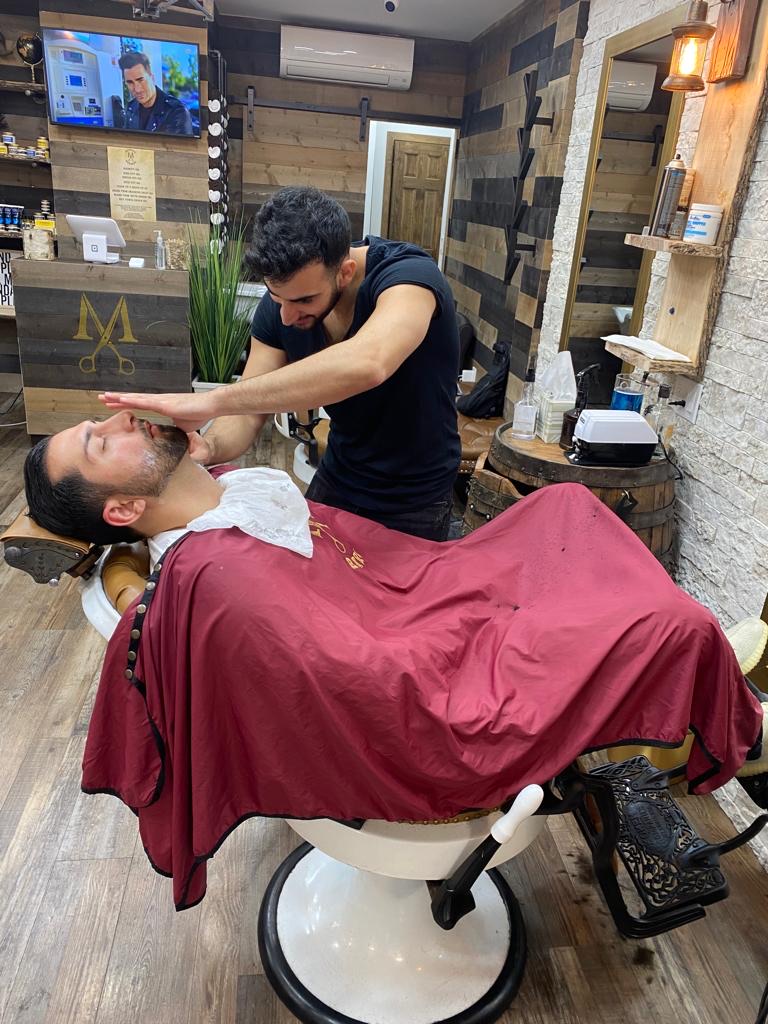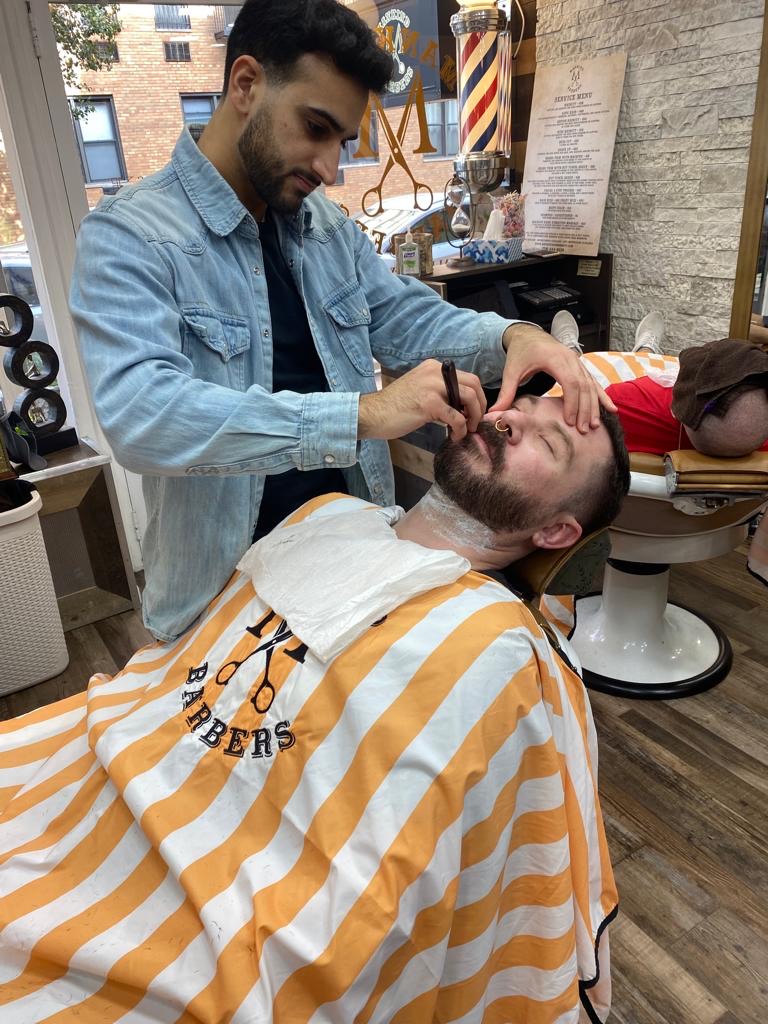Frequently Asked Questions
The best technique for maintaining the correct angle while using a straight razor involves holding the razor at approximately a 30-degree angle to the skin, which is crucial for achieving a close and comfortable shave. This angle minimizes the risk of nicks and cuts while ensuring effective hair removal. To maintain this angle, one should use a light grip on the razor's tang and scales, allowing for precise control and maneuverability. The wrist should remain flexible, enabling smooth, fluid strokes that follow the natural contours of the face. It's important to keep the skin taut by using the free hand to stretch the area being shaved, which helps the razor glide effortlessly. Regular practice and attention to the feedback from the blade against the skin can enhance muscle memory, making it easier to maintain the correct angle consistently. Additionally, using a high-quality, well-honed blade ensures optimal sharpness, reducing the need for excessive pressure that could alter the angle.
A straight razor should be honed approximately every 6 to 8 weeks, depending on the frequency of use and the coarseness of the beard it encounters, while stropping should be performed before each shave to maintain the blade's keen edge. Honing involves using a whetstone or honing stone to realign and sharpen the blade's edge, removing any micro-serrations or nicks that may have developed over time. This process restores the razor's cutting efficiency and ensures a smooth shave. On the other hand, stropping, which involves running the blade along a leather strop, helps to polish and straighten the edge, removing any burrs and maintaining the razor's sharpness between honing sessions. The leather strop, often accompanied by a canvas or linen component, is essential for daily maintenance, as it keeps the blade in optimal condition, reducing the need for frequent honing. Proper care, including regular stropping and periodic honing, extends the life of the straight razor and enhances the shaving experience.
Carbon steel and stainless steel straight razors differ significantly in performance and maintenance due to their distinct material properties. Carbon steel razors are renowned for their exceptional sharpness and edge retention, making them a preferred choice for a close, precise shave. However, they are more susceptible to rust and corrosion, necessitating diligent maintenance, including thorough drying and oiling after each use to prevent oxidation. In contrast, stainless steel razors offer superior resistance to rust and corrosion due to their chromium content, making them more durable and low-maintenance. While stainless steel razors may not achieve the same level of sharpness as carbon steel, they provide a reliable and consistent shaving experience with less frequent honing and stropping. The choice between these materials often hinges on the user's willingness to invest time in maintenance versus the desire for a razor that delivers a sharper edge.
To prevent nicks and cuts when shaving around the jawline with a straight razor, one should ensure the skin is adequately prepared and the razor is properly maintained. Begin by softening the facial hair with a hot towel or by shaving after a warm shower, as this opens the pores and makes the hair easier to cut. Applying a high-quality shaving cream or gel with a rich lather can provide a protective barrier and enhance glide. It's crucial to hold the skin taut with one hand to create a flat surface, reducing the risk of the blade catching on uneven skin. The straight razor should be honed and stropped regularly to maintain a sharp edge, as a dull blade increases the likelihood of cuts. Shaving with the grain of the hair growth, using short, controlled strokes, and maintaining a consistent angle of about 30 degrees can further minimize irritation and accidental nicks. Rinsing the blade frequently to remove hair and cream buildup ensures a smooth shave. After shaving, applying a soothing aftershave balm or lotion can help calm the skin and reduce any potential irritation.
To minimize irritation before a straight razor shave, one must meticulously prepare the skin by following several essential steps. Initially, cleansing the face with a gentle facial cleanser removes dirt, oil, and impurities, ensuring a clean surface. Exfoliation is crucial, as it eliminates dead skin cells and prevents ingrown hairs, using a mild scrub or exfoliating brush. Hydration is key, so applying a warm, damp towel or taking a hot shower softens the facial hair and opens the pores, making the shave smoother. Pre-shave oil is then applied to create a protective barrier, reducing friction and enhancing glide. A high-quality shaving cream or soap is lathered with a brush to lift the hairs and provide cushioning. Throughout the process, maintaining skin tautness is vital to prevent nicks and cuts. Finally, after shaving, rinsing with cold water closes the pores, and applying an alcohol-free aftershave balm soothes and moisturizes the skin, reducing the risk of irritation and razor burn.

